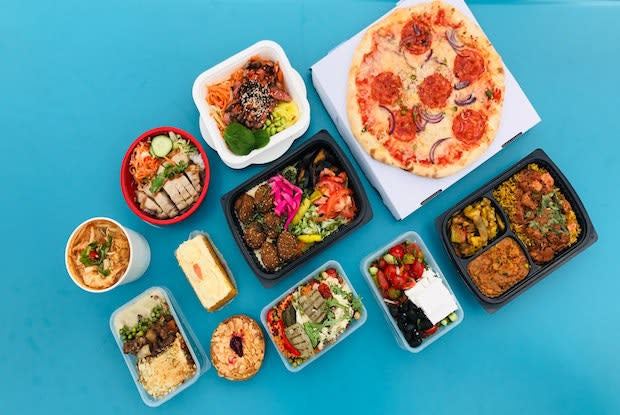Table of Contents
I. Combining Diet with Treatment Plan
II. Complex Carbohydrates and Low GI Foods
Combining Diet with Treatment Plan
A healthy diet is extremely important when it comes to managing type 2 diabetes. By eating right, you can keep your blood sugar levels low and avoid severe complications like heart attack and stroke. Many people with type 2 diabetes who use medications like Farxiga (Dapagliflozin), Jardiance, or Rybelsus(Semaglutide) find combining their treatment with the right meal plan effective and beneficial. Read on for tips on how to meal plan with type 2 diabetes. [1]
Complex Carbohydrates and Low GI Foods
The right diet for you will be the one that most effectively lowers your blood sugar and manages your blood pressure, weight, and cholesterol. This means choosing complex carbohydrates (high in fiber and vitamins) over simple carbohydrates (high in sugar). Some people think you cannot eat any forms of carbohydrates if you have type 2 diabetes. While all carbohydrates affect your blood sugar levels, carbohydrates with a low-glycemic index can be good for you. [1]
To choose healthy carbohydrates, you need to first understand the glycemic index (GI). The glycemic index is a scale that ranks food by how much it raises your blood sugar. The higher a certain food is ranked, the more it increases your blood sugar and vice versa. The three GI categories are: People with diabetes should choose foods from the Low GI category as often as possible. Carbohydrates in the Medium GI category should be chosen less often, while foods in the High GI category should generally be avoided. [2] Low GI grains and starches include: Fruits that are in the Low GI category include: Now that you know which foods have the green light, it is also important to know foods you should avoid. Foods that are in the High GI category include: Lowering your sugar intake is fairly straightforward. Highly processed foods are usually high in artificial sweeteners, high-fructose corn syrup, and refined sugar. [4] Processed foods often contain excess sodium and saturated fat, so choosing unprocessed foods and making food from home may be your best options. In general, avoiding soda pop, candy, and desserts can help maintain a healthy blood sugar level. [1] Avoiding simple sugars and choosing complex carbohydrates is the first step to a healthy meal plan. If you want to take it one step further, you can include superfoods in your diet. Essentially, superfoods are nutrient-rich foods that consist of more than simply fats, proteins, or carbohydrates. Superfoods provide vital nutrients like vitamins, minerals, and omega-3 fatty acids that can be very beneficial, especially for people with type 2 diabetes. [4] Here are five superfoods to include in your meal plan: Wild salmon: salmon provides anti-inflammatory omega-3 fatty acids. Wild salmon is superior to farmed salmon; wild salmon live in colder waters and develop a higher ratio of omega-3 fatty acids to saturated fats. Additionally, farmed salmon contains up to 10 times more organic pollutants and other contaminants that have been associated with an increased risk of heart disease and cancer. Lentils: lentils are high in iron and folate. Lentils are a complex carbohydrate high in fiber and many B vitamins. Cinnamon: cinnamon has been shown to lower blood sugar levels, making it particularly beneficial to people with type 2 diabetes. Research shows that one teaspoon of cinnamon a day can lower blood sugar after meals. Chia seeds: chia seeds are high in protein, fiber, and omega-3 fatty acids. Chia seeds are also incredible because they can lower the glycemic load of a meal, thereby stabilizing your blood sugar and keeping you full for longer. White balsamic vinegar: white balsamic vinegar is typically used as a vinaigrette dressing for your salad. It is a superfood because it slows down gastric emptying, which slows the rate at which glucose is released into your bloodstream. Like chia seeds, white balsamic vinegar will keep you feeling full for longer periods, making you less likely to overeat throughout the day. [4] Even if you are eating the right foods, eating too much can affect your blood sugar. Studies have shown that the more food people are served, the more they tend to eat. [5] Compared to 20 years ago, restaurants nowadays are serving much larger portions. Part of eating the right amount comes down to being aware of how much food is on your plate and resisting the temptation to go for seconds. When eating out, it is recommended that you take half of your meal to go. When preparing your own meal, it may be beneficial to limit yourself to: After talking to a dietician and figuring out the right meal plan for you, the next step is execution. Preparing healthier meals takes more effort than heating up packaged, ready-to-eat foods. If you work, it may be hard to find time to cook your own meals. If you are a student, you may only have partial access to a kitchen. In these cases, meal prepping for the week ahead may save you time. There are also services that can deliver specific serving sizes of ingredients to save you the hassle of grocery shopping. Putting it all together may be difficult, especially in the beginning, but it will be worth it. The right meal plan will maximize the effectiveness of your treatment plan and keep your type 2 diabetes manageable for years to come. The content in this article is intended for informational purposes only. This website does not provide medical advice. In all circumstances, you should always seek the advice of your physician and/or other qualified health professionals(s) for drug, medical condition, or treatment advice. The content provided on this website is not a substitute for professional medical advice, diagnosis, or treatment.
Limiting Sugar

Superfoods
Portion Sizing

Putting it All Together
